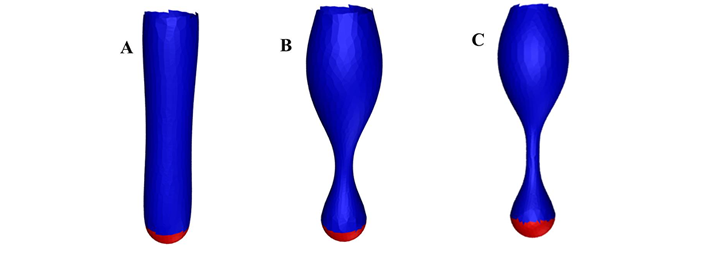Building correlated percolation models inspired by jamming in granular and glassy systems
While we are all very familiar with the transition from water to ice, or liquid to crystalline solid, upon cooling, there also exists transitions, if you will, from liquid to disordered solids. Paint drying, coffee beans stuck in a dispenser, and glass making are several “day-to-day” examples. To mathematically describe the transition from flowing to not-flowing, a.k.a. jammed, has proven to be difficult for various technical reasons resulting in a sea of competing approaches. Our approach is to construct toy models that capture different properties of systems near the onset of glassiness and/or jamming. With these toy models we can isolate and, therefore, identify what properties determine a particular response. To date, such models take into account local properties of mechanical stability, or rigidity, via a technique known as correlated percolation. However, we are about to introduce a new correlated percolation model that incorporates both local and global properties of mechanical rigidity using local rules, dubbed the jamming graph. This graph-based model should provide a basis for understanding the onset of jamming in spherical particle systems and ultimately in systems with more generic shapes that exhibit somewhat different properties of mechanical rigidity from spheres. Interesting, huh. In addition, stay tuned for a new method of analysis for frictional jammed systems under shear to shed more light on how such systems destabilize.
Studying the interplay between morphology and rheology in the actin cytoskeleton via rigidity percolation
The actin cytoskeleton gives the cell shape and support, is crucial for cell locomotion, and participates in cell division. To date, there are basically two approaches to modelling the actin cytoskeleton. The first approach is kinetic and models how the actin cytoskeleton changes its structure (from network-like to bundle-like) to perform its tasks, while the second approach invokes an elasticity theory of disordered, static structures, i.e. rigidity percolation. Our group has used both approaches with the ultimate goal of unifying the two. In the mean time, our latest model of the actin cytoskeleton addresses how mechanically different types of crosslinkers act both redundantly and cooperatively in determining the elasticity of the actin cytoskeleton to help explain the “need” for different types of crosslinkers.
Looking for discontinuous, disorder-driven localization transitions in quantum systems via quantum percolation
In the paradigm of quantum metal-insulator transitions, a discontinous onset of conduction suggests that interactions drive the system from one phase to the other, while a continuous onset of conduction suggests that disorder drives the phase transition. Our group has constructed and analyzed a model called quantum k-core percolation and found a discontinuous onset of conduction even though it is disorder driving the transition. In other words, our discovery does not fit the standard paradigm calling for, perhaps, a paradigm shift. 🙂

